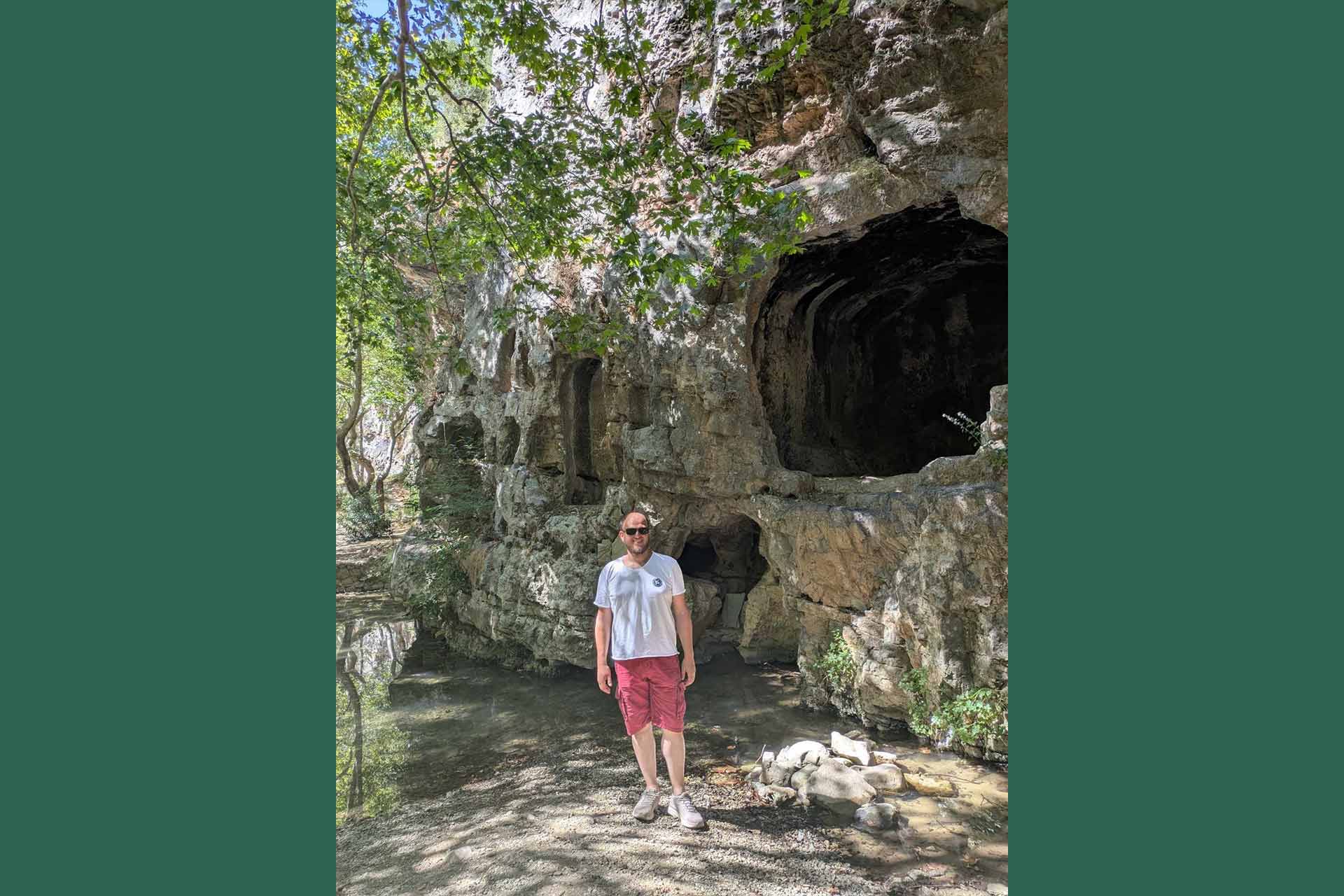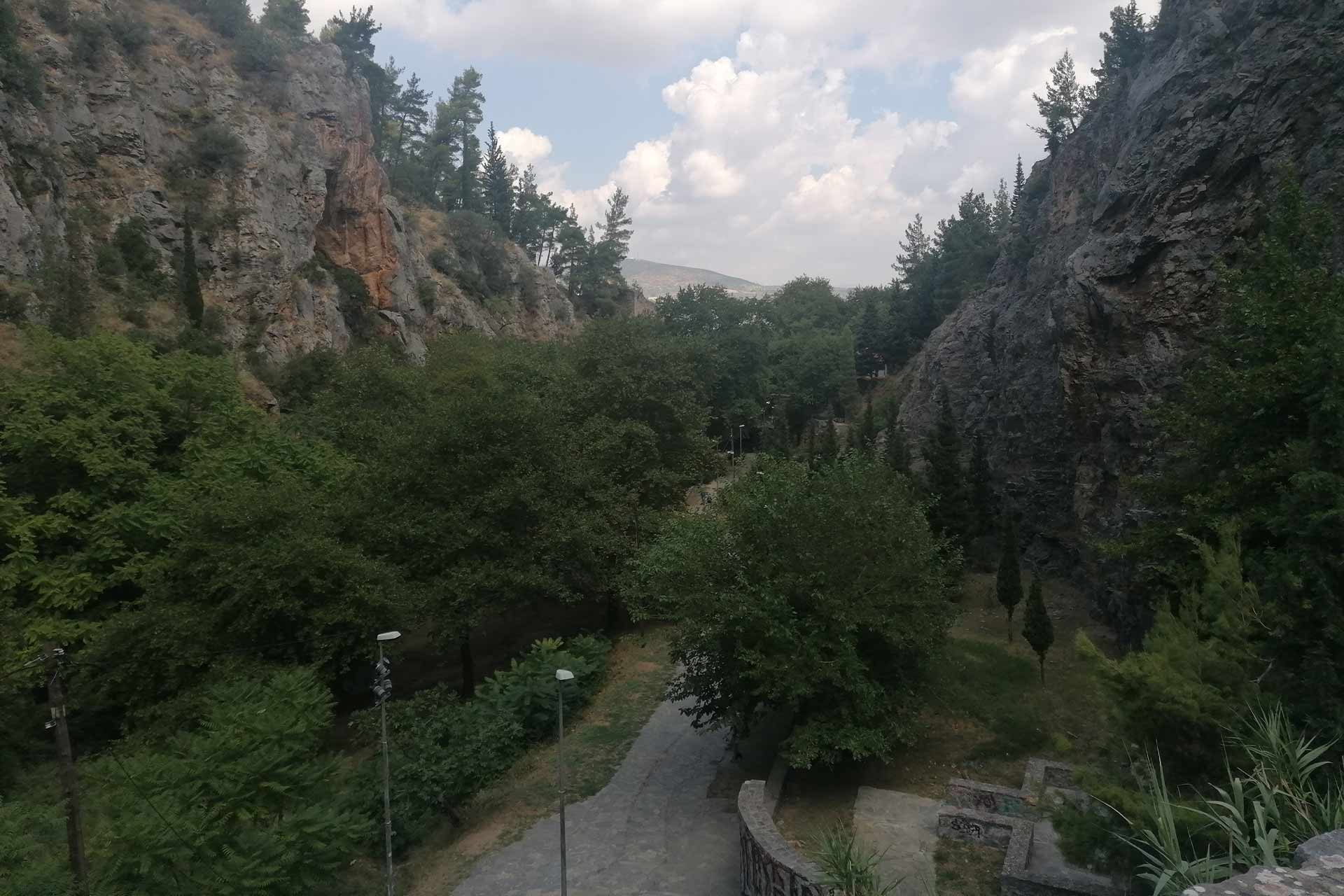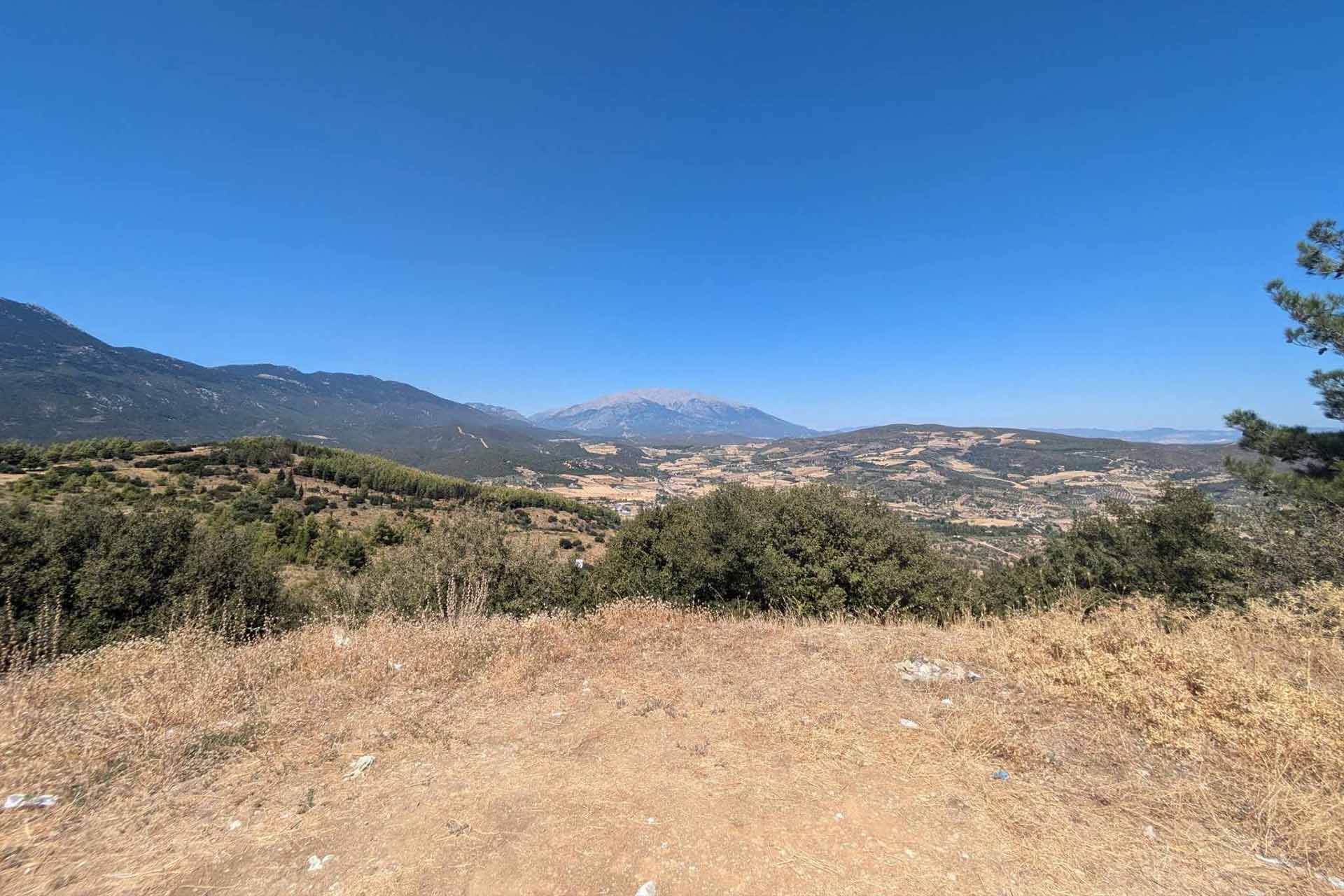
The Peet Travel award was given to me to support my PhD research on the oracular cult site of Trophonius at Lebadeia in Boeotia, a project under the supervision of Dr Georgia Petridou and Dr Zosia Archibald. A key aspect of my project examines the religious landscape surrounding the oracular cult site to understand how this cult interacted with other cult sites.
The funding from the Peet Travel Award helped to facilitate several research activities over the course of my stay in Athens and Lebadeia. However, the key benefit was my ability to finally access the landscapes which I have been studying for years. The gorge in which the oracular cult site was located is far narrower and imposing than any image or description can properly convey.
View down the narrow gorge:

My trip up the narrow gorge began at the votive niches for the oracular cult site. These niches appear natural, and have long been misidentified as the cave of Trophonius. Rather conveniently (and opposite the archaeological remains) there is a very good coffee shop above the springs of the river Hercyna, not far away. Hercyna is the third deity worshipped in this very confined gorge in antiquity.
A recurring aspect of my research of the oracular cult site of Trophonius has been the never-finished construction of the temple of Zeus Basileios on the hill above the cave of Trophonius. Every map and description I could find of both sites emphasised the close proximity of one to the other. What I didn’t quite realise before actually walking from one to the other is that the majority of the distance between the two sites is vertical. How people actually accessed these places in antiquity is vital to understanding how they operated, and the relationships between the two cult sites.
The approach from the valley below up to the site of the temple itself provides the first unconfined view of the entire walk up, and it becomes immediately obvious why a significant temple to Zeus was built here.
View from the ruins of Zeus Basileios:

On my final day before returning to Athens, I could not resist getting the bus to Delphi in order to go to the archaeological museum and sites there. There was also a performance in the reconstructed theatre at Delphi that evening, which is well worth going to if you ever get the chance.
The Peet Travel Award has significantly aided the development of my research, not only through facilitating access to objects and collections, but also facilitating my access to a landscape which can only be fully understood by experiencing it yourself.
Find out more about funding, including the Peet Travel Award